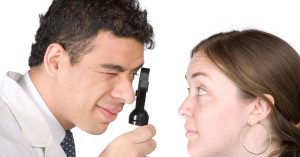Call for your appointment today 914-666-4665 | Mt. Kisco, New York

For Immediate Release:
For Information or Interview Requests
Contact: Sue Ferrara, PhD
pr*******@***ds.org
(609) 947-9489
Back to School: The ABCs of Lyme and other Tick-borne Infections
 As families transition from summer activities to Back-to-School preparations, the International Lyme and Associated Diseases Society (ILADS) urges parent to think about where their children have been this summer; where will they play during recess at school; and especially, where will student athletes practice or compete during sports seasons. Learning the simple ABCs of tick bites will help parents keep students safe and healthy.
As families transition from summer activities to Back-to-School preparations, the International Lyme and Associated Diseases Society (ILADS) urges parent to think about where their children have been this summer; where will they play during recess at school; and especially, where will student athletes practice or compete during sports seasons. Learning the simple ABCs of tick bites will help parents keep students safe and healthy.
Daniel Cameron, MD, MPH, the current president of ILADS, suggests parents watch their children who are returning from a summer away at camp for signs of possible lyme infection. “Many people never see a tick as it’s biting; and, many people won’t exhibit what has become known as the bull’s eye rash,” said Dr. Cameron. “However, there are other signs parents should look for including fatigue, headaches, poor concentration and joint pain,” said Dr. Cameron.
Understanding ticks and the infections they transmit is still a work in progress, Dr. Cameron noted. Until recently, most health care providers treated a tick bite or the bull’s eye rash, with one of two regimens: one dose of 200 mg of doxycycline; or, three to four weeks of treatment with 100 mg of doxycycline twice a day, respectively. On August 1, 2014, ILADS released updated guidelines suggesting a change in treatment protocols. “Lyme disease is a complex illness,” noted the guideline authors. “Patients may experience both acute and persistent manifestations.” And those persistent manifestations of the disease, said Dr. Cameron, are poorly understood and often labeled as having developed from something other than a tick bite.
Students can get bitten in their own backyards. However parents should instruct their children to stay out of tall grass while walking to and from school; or, while playing outside during recess. Parents and coaches should also be mindful of the areas around playing fields used for practice and games. Parents of students who run cross-country should talk about whether or not to use an insect repellant containing DEET, which is effective against mosquitoes and may repel ticks. Parents could also have uniforms treated with permethrin. (See: https://npic.orst.edu/factsheets/Permtech.pdf)
Here are the ABCs of lyme and tick-borne diseases from ILADS:
A- Awareness
While people associate ticks with wooded areas, the fact is many people get bitten in their own backyards. Ticks can be transmitted to people by pet dogs and cats. Horses have been known to transfer ticks to people. Being aware of your environment and taking precautions can reduce one’s exposure. The University of Rhode Island hosts the TickEncounter Resource Center which provides lots of information. www.tickencounter.org
B- Bites
The National Institute of Allergy and Infectious Diseases maintains a tick must be attached for 36-hours in order to transmit lyme; newer research challenges that claim. Consequently, checking for ticks is the best defense available right now. Don’t allow your students to merely shower after being outside. Ticks can remain attached even after a cleansing. Don’t forget to look along the hairline; examine your child’s back— a place they can’t see. Also, look behind the knees. If you find a tick, remove it carefully and immediately. ILADS has an instructional video. See: https://www.ilads.org/lyme/what-to-do-if-bit-by-tick.php
C- Challenges
While some cases of lyme disease resolve with routine treatment, many patients suffer long term consequences. Ticks can transmit more than lyme disease. Diagnosing associated illnesses from tick bites takes a skilled practitioner. Finding what many patients call a Lyme Literate health care provider is the key to getting better. ILADS provides patient information and can assist with finding the appropriate physician in a given area. There are also a number of lyme patient support groups on the national, state and local levels. Those organizations also help patients find physicians.



